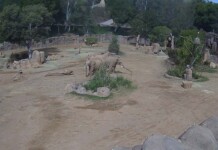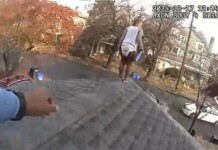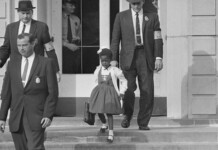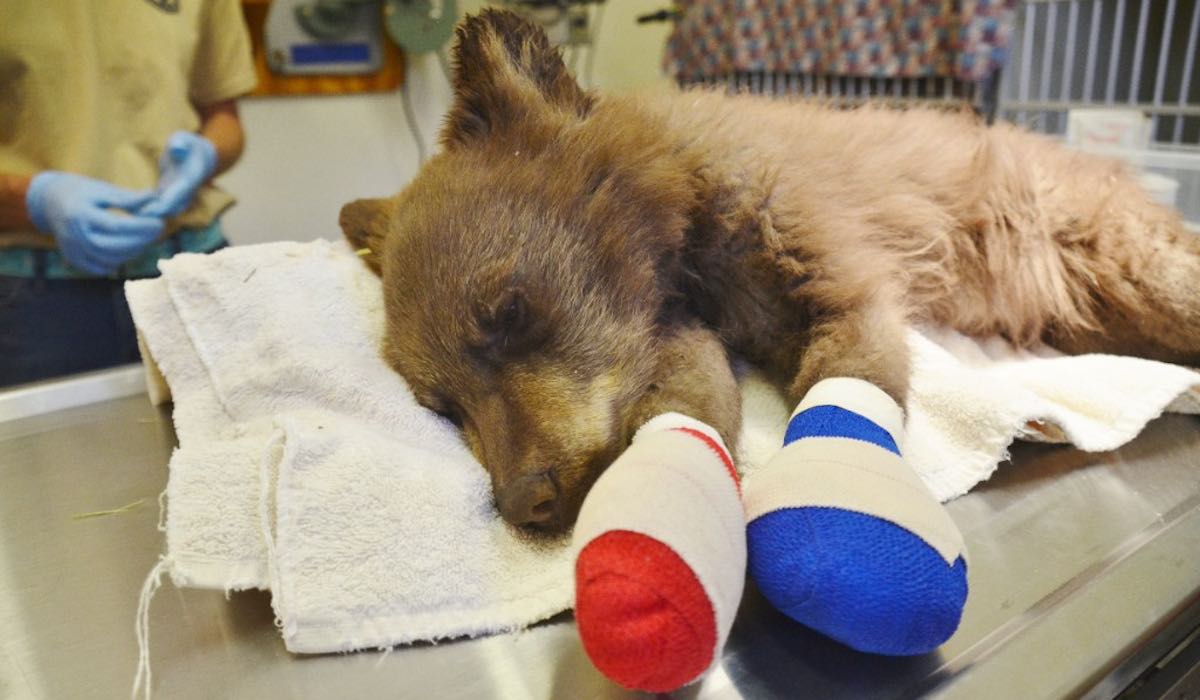Dry, hot, and windy weather conditions have fed a dozen wildfires across Colorado forcing the safe evacuation of thousands of homes in the West and South, but one furry resident ‘bearly’ made it out.
Firefighters spotted a bear cub wandering alone in a burned-out area north of Durango with no sign of her mother.
The cub suffered severe burns to its feet, according to the Colorado Parks and Wildlife staff who have been treating the animal, estimated to be 4-5 month-old, at their Frisco Creek wildlife facility near Del Norte.
“When the bear was brought in I wasn’t sure if it was going to make it,” said Michael Sirochman, manager of the facility. “But she’s responding very well to treatment and by winter we believe we’ll be able to return her to the wild.”
WATCH: Childless Couple Rescued an Orphaned Bear—Now 7-feet Tall, He Loves to Cuddle
Firefighters working on the massive 416 fire, which burned 47,000-acres of national forest, but is 37 percent contained as of Saturday morning, kept an eye on the bear for a couple of days but didn’t see a mother bear nearby.
Matt Thorpe, area wildlife manager in Durango, then made the decision to send the bear to Frisco Creek to determine if it could be treated.
“We weren’t optimistic at first,” Thorpe said. “It probably hadn’t eaten in a couple of days, but it had survived on its own so we wanted to give it a chance.”
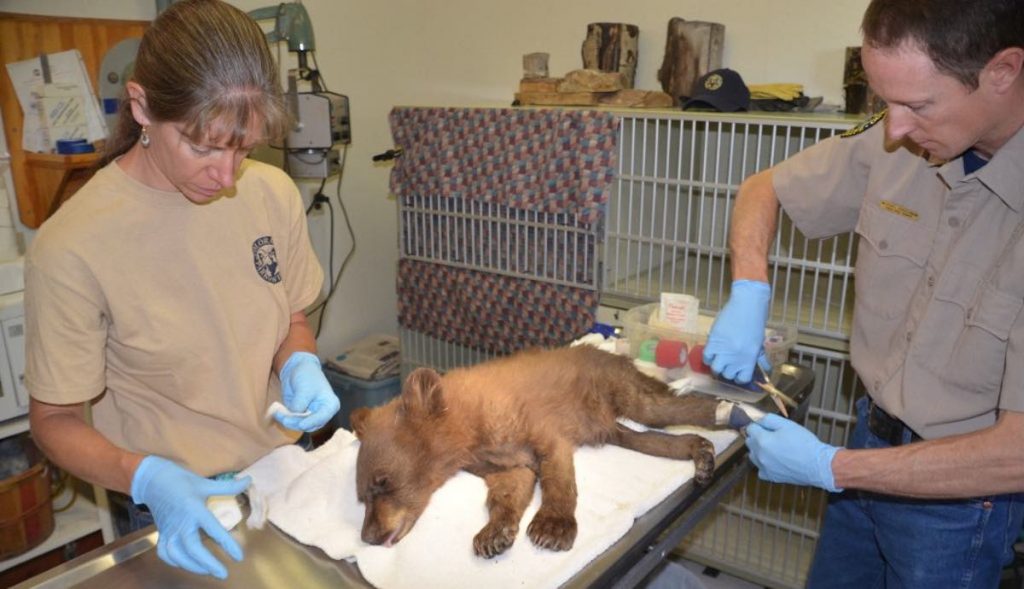
WATCH: Amusing Video of Two Cats Trying to Pass Each Other Atop a Narrow Doorframe
How the cub became separated from its mother is unknown, but Sirochman speculated that ‒ as is common with most wildlife species ‒ the mother placed the cub in a safe place but was unable to return.
One concern about treating bears for injuries is that they could become habituated to humans which, in turn, can makes them unfit to return to the wild. Consequently, Sirochman and his staff have set up Frisco Creek so that bears have almost no contact with humans. In the case of the injured cub, it must be anesthetized for every treatment, and when it wakes up the human is gone.
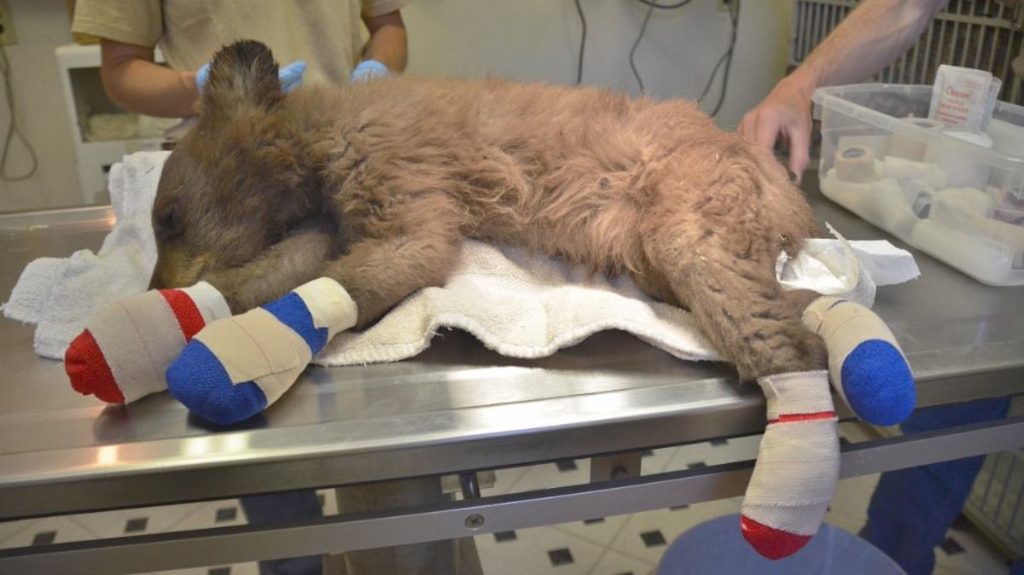
“We have good luck returning young bears to the wild,” Sirochman said.
The bear is being fed a liquid milk replacement that imitates the milk of a sow. It’s also receiving solid food.
MORE: Gorilla Hugging Man Who Saved Her Life: The Wildlife Photographer of the Year Award
Sirochman estimated that bandaging the feet will continue for up to a month. After the feet are healed it will be placed in an enclosure with the four other cubs currently at the facility. The bears will grow and fatten up throughout the summer and fall.
While no decisions have been made about how the bears will be released, it’s likely that after they begin to hibernate in late fall Colorado wildlife officers will build a den close to the area where the bears were found. Responding to the natural hibernation cycle, the bears will emerge in the spring of 2019, probably by April.
The fires are also affecting communities across the state with smoke inundating towns as far as a hundred miles away. One employee at a Conoco gas station in Pueblo told Good News Network, “The smoke has been really bad… A friend of mine had ashes falling all over his car.”
Spread the Good News–Share with your Pack!


